How much does it cost to build a crypto mining rig at home?
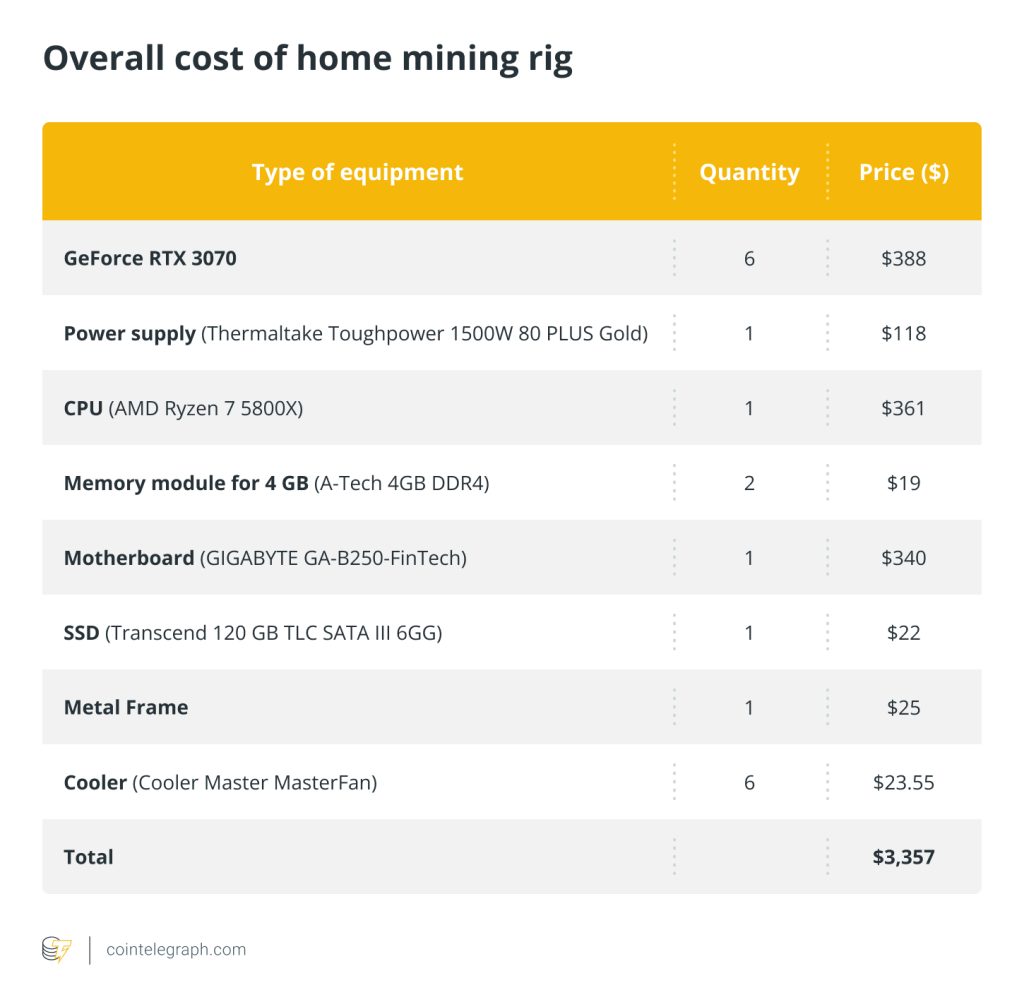
The cost of building a home mining rig is significant, but there are ways that would-be crypto miners can economize their build.

As Bitcoin (BTC) breaks into new all-time highs, with many predicting a bull market for 2024, some may be thinking again about mining crypto at home.
While Bitcoin mining may no longer be a viable option for home miners due to the increasing difficulty and the soon-to-be-halved rewards for mining a block, there are several other cryptocurrencies that one can mine at home.
Sources like WhatToMine can help people choose the most profitable based on their hardware. For example, a rig of six MSI GeForce RTX 3080Ti graphics processing units (GPUs) will be most profitable when mining Ravencoin (RVN) and bring around $170 per month. Zcash (ZEC) can bring in almost the same revenue while mining Clore (CLORE) can earn $158 per month.
But what components does one need to mine crypto at home? Here’s a list of the basic components a home crypto miner will need:
GPU
Choosing the GPU is the most difficult part of building an at-home cryptocurrency mining rig, and it may require more than one day of study to choose the right one.
Numerous sources can calculate combinations of GPU cards for any budget, and a miner can calculate the best option regarding equipment costs and how much income a GPU card will bring.
A standard home rig requires a minimum of six GPU cards. Top cards like the Nvidia RTX4000 series cost anywhere from $1,000 to $2,000, which could be extremely high for a home miner.
A more budget-friendly GPU for mining Zcash would be the MSI GeForce RTX 3070 Gaming X Trio 8 gigabyte (GB) for $388 per card or $2,328 for all six.

Power supply
The power supply ensures the stability of electricity to the mining rig. A mining rig consumes around 3–3.5 kilowatt-hours (kWh) of energy per month, so buying a power unit with a power reserve of 20–30% is better.
You can take server models or connect two to three in parallel. High-efficiency power supplies are marked with 80 Plus Gold, Platinum and Titanium ratings.
Recent: Moon or doom: Why do so many crypto startups fail?
The Corsair HX 1200-watt 80 Plus Platinum certified power supply boasts tight voltage control, ultra-quiet operation and a fully modular cable set. It usually retails for around $171.
The market offers cheaper supply models like the Thermaltake Toughpower 1500-watt 80 Plus Gold for $118. This power supply boasts a semi-modular design, a silent fan and support for up to 10 GPUs. Another feature of this power supply is the low-profile flat modular cables that allow for easy routing and improve system airflow.

Central processing unit (CPU)
Miners can easily opt for a more budget-friendly option for their rig’s central processing unit, as the CPU is not critical to performing mining operations.
Miners could choose any inexpensive model compatible with the motherboard, such as the AMD Ryzen 7 5800X, for $361.
Memory
The random-access memory (RAM) module is not required directly for mining, but it affects the rig’s performance. A miner could take a simple 4 GB RAM card like the A-Tech 4GB DDR4, costing $38 for the 8 GB of RAM required to run a mining rig on Windows 10 or 11.
Linux, which generally is not overloaded with “unimportant” software, works well with only 4 GB of RAM.
Motherboard
In the case of the motherboard, the critical element is the number of peripheral component interconnect express, or PCIe, slots to which GPU cards can be connected. Some models have four, six, eighth or even 12 ports.
The Gigabyte GA-B250-FinTech, which retails for $340, allows for the simultaneous installation of up to 12 GPU cards. The package also includes additional accessories that may come in handy like a special adapter that allows you to connect up to three power supplies at the same time — a useful functionality for mining.
A cheaper option is the ASRock H110 Pro BTC+ model for $168. This motherboard was also designed specifically for mining and comes with 13 card slots and additional power connectors to keep the whole device running smoothly.
Hard drive or SSD
The hard drive or solid-state drive (SSD) is not involved in mining cryptocurrencies but can determine the speed of the operating system. It’s best to choose an SSD, as they provide faster boot-up times.
A mining rig usually requires at least 120 GB. The miner can easily find an appropriate SSD, the cost of which doesn’t exceed $20–$30.
Frame
Home miners are best built on an open frame as they can help mitigate the significant heat generation of six GPUs. Miners can find an inexpensive, used or new frame to build their rig that usually won’t break the bank, costing anywhere from $20–$100.

Cooling
As noted above, cryptocurrency mining rigs generate significant heat, and any home mining rig will need good temperature control options.
For a six-GPU mining rig, miners should choose four to six fans that can cost between $100–$130 in total.

Of course, if the mining rig is located in a cold environment, the cooling system can be significantly cheaper, but not all home miners have this option.
Total calculations
Choosing more budget-friendly options, the cost of a home mining rig comes in at around $3,400, which is a significant up-front cost and could take several months to recoup.
Building a mining rig doesn’t end with purchasing the equipment and setting up the necessary programs. Additional costs, like electricity, affect the final earnings.

However, despite the significant upfront costs, there are ways that miners can optimize their rig to make it as efficient as possible.
Miners can select more energy-efficient equipment to reduce energy consumption by using components with high performance-to-energy ratios and optimizing mining program settings.
Some programs like Evga Precision allow miners to adjust the mining intensity, which can reduce energy consumption.
Miners can also “undervolt” equipment, i.e., reduce the voltage to the GPU card without significant loss of performance. The most popular program for undervolting is MSI Afterburner.
Another way of optimizing a mining rig is by “overclocking” its performance i.e., tuning the computer components to work at a higher capacity than that intended by the manufacturer.
Recent: UK court rules Craig Wright not Nakamoto, ending long-standing drama
This can improve mining performance but also increase the risk of overheating and potentially shortening hardware life.
Miners should always monitor the hardware temperature with software like HWMonitor or MSI Afterburner to safely overclock hardware.
Home miners can also overclock in small increments to test the stability of the system at each stage, as well as make improvements to the cooling system.
Overall, with careful calculations and planning, home miners can still make a decent profit.


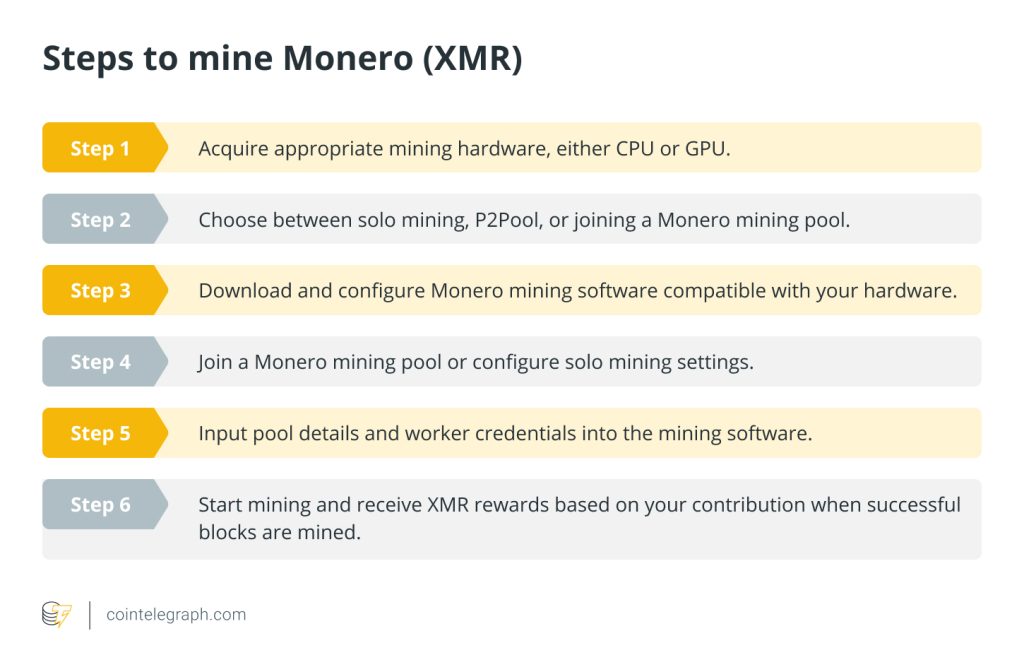
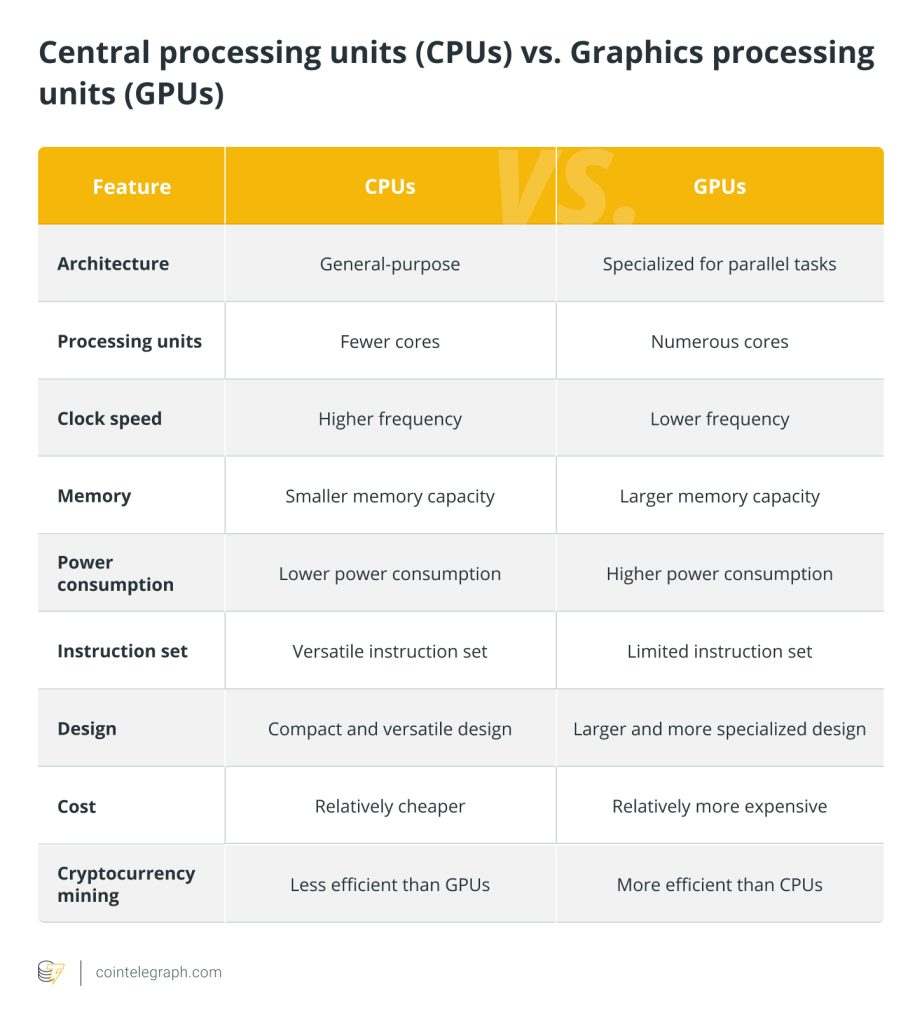
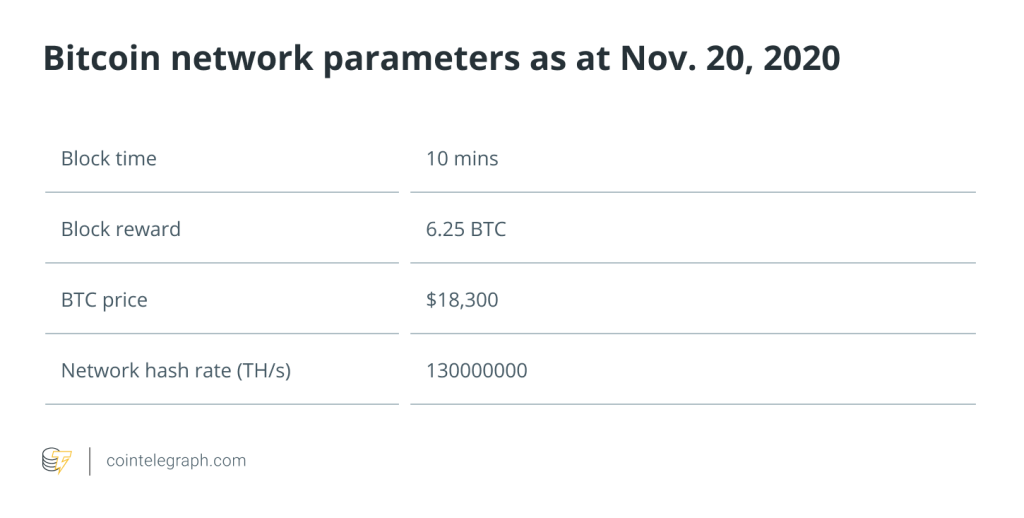
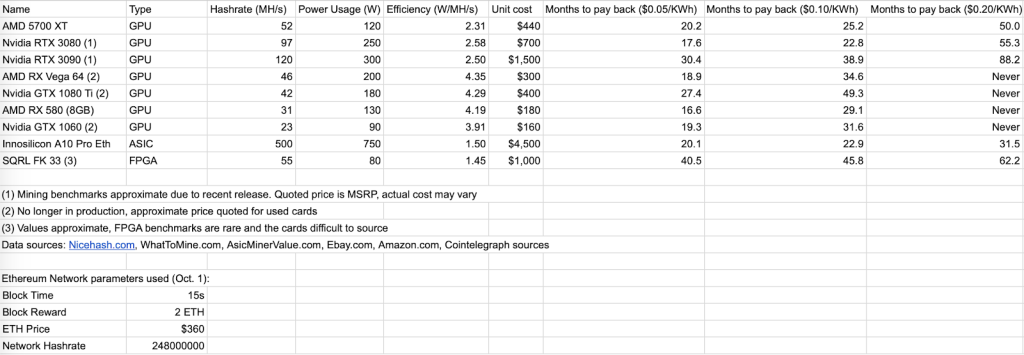
Responses